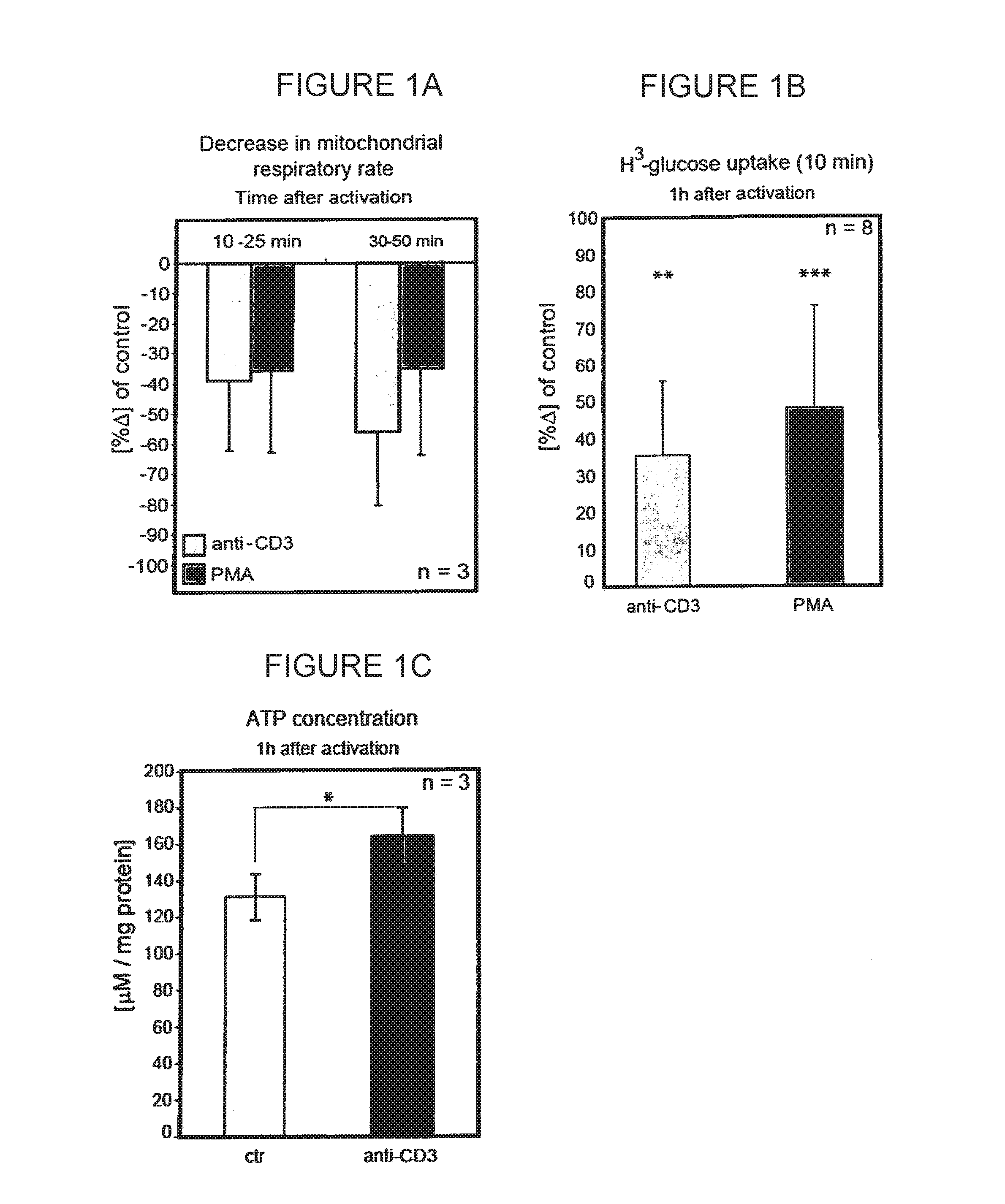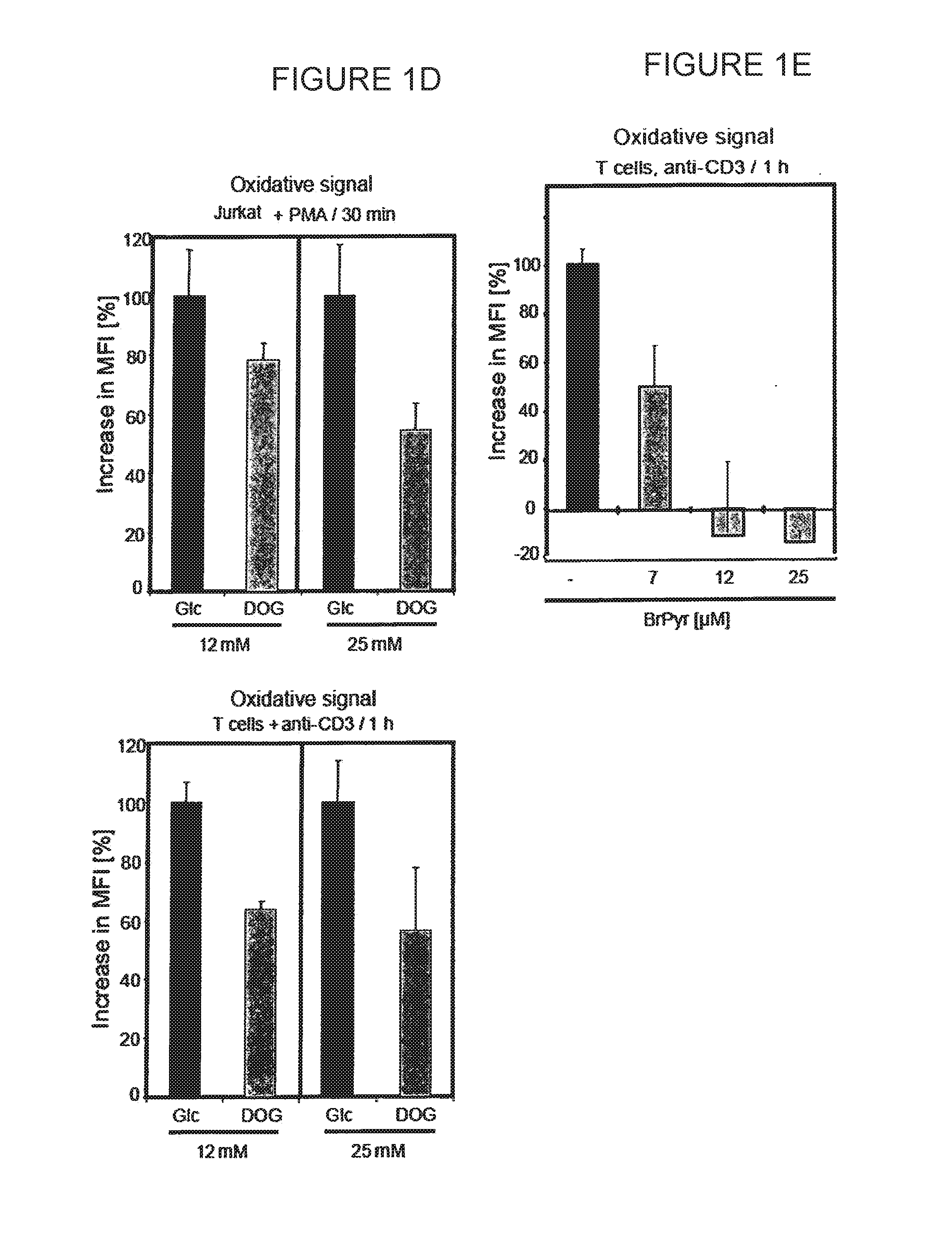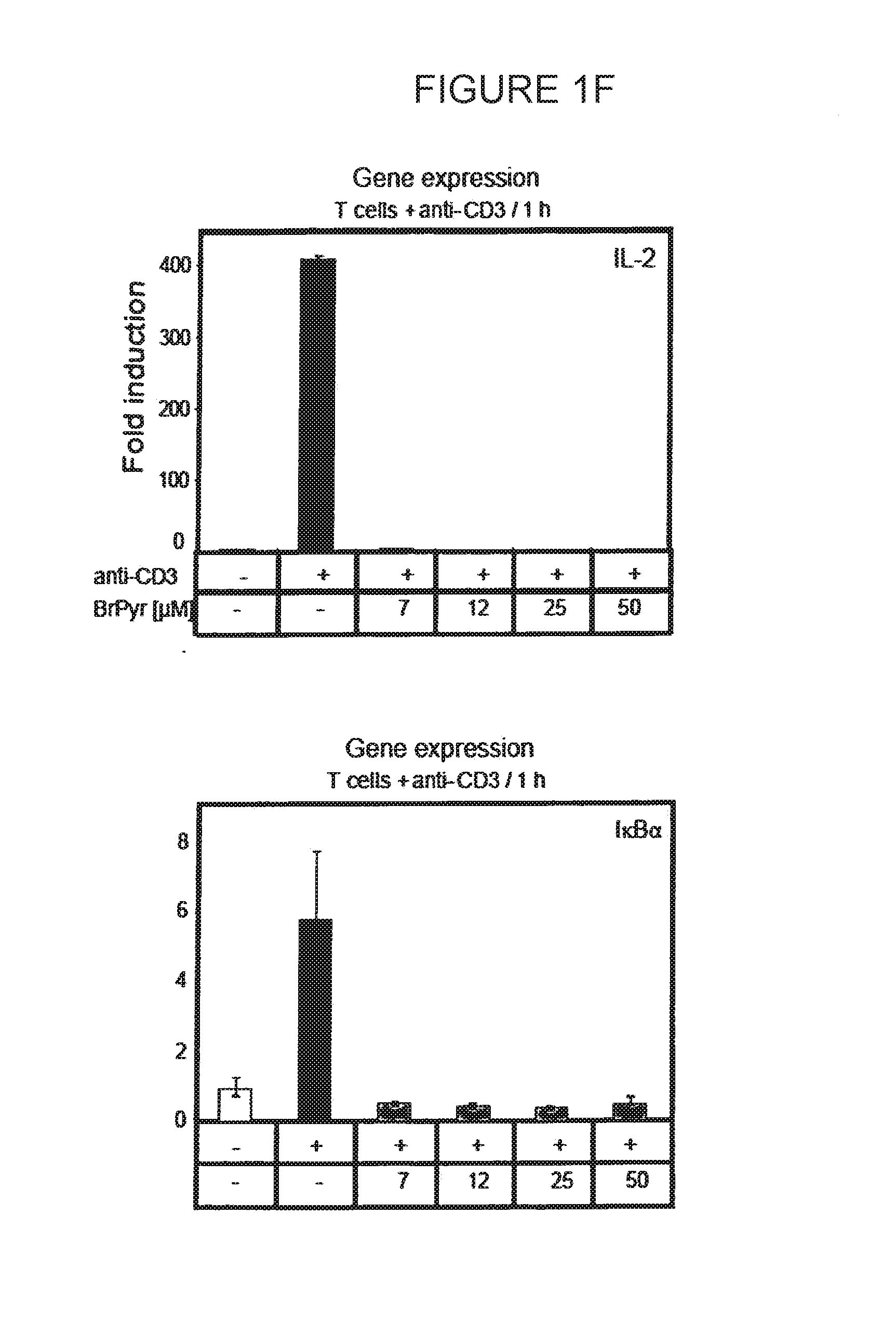Modulators of adp-dependent glucokinase (ADPGK) and glycerol-3-phosphate dehydrogenase (GPD2) for therapy
a technology of glycerol and adp-dependent glucokinase, which is applied in the field of modulators of adp-dependent glucokinase (adpgk) and glycerol3phosphate dehydrogenase (gpd2) for therapy, can solve the problems of limiting the effectiveness of chemotherapy, cancer remains one of the major causes of death, and the effect of cancer chemotherapy is often limited
- Summary
- Abstract
- Description
- Claims
- Application Information
AI Technical Summary
Problems solved by technology
Method used
Image
Examples
example 1
Materials and Methods
[0087](A) Chemicals
[0088]If not stated differently all reagents and enzymes used were supplied by Sigma-Aldrich (Munich, Germany). Dichlorodihydrofluorescein diacetate (H2DCF-DA) was obtained from Invitrogen (Carlsbad, Calif., USA). Iono was purchased from Merck (Darmstadt, Germany). Primary antibodies for Western blot (WB) were: from Sigma-Aldrich (Munich, Germany)—mouse monoclonal anti-FLAG (M2), rabbit polyclonal anti-FLAG, mouse monoclonal anti-γ-tubulin, rabbit polyclonal anti-GPD2 (Human Protein Atlas Antibodies); from Cell Signaling (Denvers, Mass., USA)—rabbit polyclonal anti-HK1 and rabbit polyclonal anti-HK2; from Abcam (Cambridge, UK)—mouse monoclonal anti-human ADPGK (1E4); from Santa Cruz Biotechnology (Santa Cruz, Calif., USA)—goat polyclonal anti-SOD1; from Milipore (Darmstadt, Germany)—rabbit polyclonal anti-SOD2, from ABR (Golden, Colo., USA)—rabbit polyclonal anti-calreticulin; from GeneTex (Irvine, Calif., USA)—rabbit polyclonal anti-β-actin a...
example 2
TCR Triggering Induces a Warburg Effect-Like Metabolic Shift in Pre-Activated T Cells
[0143]A reduction of mitochondrial respiration and an increase in glycolysis are central to the Warburg effect (11-14). An oxygen electrode was applied to measure activation-induced changes in mitochondrial respiration of intact human T cells. In line with the Warburg phenotype, treatment with agonistic anti-CD3 antibody or PMA resulted in a significant inhibition of mitochondrial oxygen consumption (FIG. 1A and FIG. 7A), whereas the cellular uptake of radioactively labeled glucose rapidly rose after stimulation (FIG. 1B). The consecutive rise in intracellular ATP levels (FIG. 1C) highlighted that in spite of normoxia, TCR triggering of in vitro expanded human peripheral T cells led to a rapid shift towards an even more glycolytic phenotype.
[0144]To verify a causative link between observed metabolic changes and enhanced mitochondrial ROS production, the influence of 2-deoxy-glucose (DOG) and 3-bromo...
example 3
Generation of the Oxidative Signal is Accompanied by Major Bioenergetic and Ultrastructural changes within the mitochondria
[0145]TCR-triggered PKCθ induces oxidative signal generation by mitochondrial respiratory complex I (3). To gain more insight into the relationship between the activation-induced Warburg metabolic shift and the mechanism of mitochondrial ROS release the bioenergetic status of respiratory chain complexes was investigated. To this end, snap-frozen and digitonin-permeabilized in vitro expanded human T cells were applied. As shown in FIG. 1G (upper panel), TCR triggering resulted in a significant decrease of enzymatic activities of complexes I and II, while activity of complex III was increased. A similar pattern could be observed in cells treated with PMA (FIG. 1G, lower panel). The data show that these phenomena are independent from TCR-triggered mitochondrial Ca2+ uptake. Moreover, they suggest that a DAG / PKCθ-dependent pathway is involved. In line with this assu...
PUM
| Property | Measurement | Unit |
|---|---|---|
| concentration | aaaaa | aaaaa |
| pH | aaaaa | aaaaa |
| volume | aaaaa | aaaaa |
Abstract
Description
Claims
Application Information
 Login to View More
Login to View More - R&D
- Intellectual Property
- Life Sciences
- Materials
- Tech Scout
- Unparalleled Data Quality
- Higher Quality Content
- 60% Fewer Hallucinations
Browse by: Latest US Patents, China's latest patents, Technical Efficacy Thesaurus, Application Domain, Technology Topic, Popular Technical Reports.
© 2025 PatSnap. All rights reserved.Legal|Privacy policy|Modern Slavery Act Transparency Statement|Sitemap|About US| Contact US: help@patsnap.com



